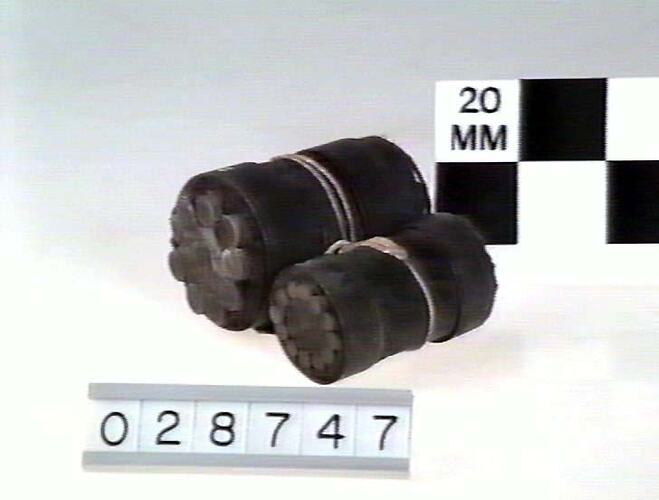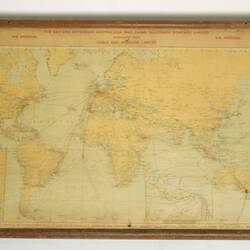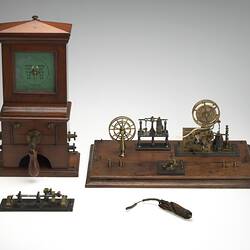Summary
Two pieces of submarine telegraph cable donated by Mrs H. F. Chaffey of Mildura. The two pieces were originally given to a member of the Chaffey family by Cyrus Field, who was closely associated with the laying of the earliest trans-Atlantic submarine telegraph cables. The two pieces were described as coming from the first trans-Atlantic telegraph cable. One is a sample of the deep-sea cable, the other of the shore-end cable.
The physical description of the deep-sea cable sample does not match published descriptions of the earliest cables laid between Newfoundland and Ireland. However, it matches the available descriptions of the Cabot Strait cable laid between Newfoundland and Nova Scotia in 1856. No description of the shore-end cable has been located but it seems reasonable to assume that the shore-end cable sample is also from the Cabot Strait cable.
The Cabot Strait cable formed a vital link in the telegraph connection between the United States and Europe and was the first submarine cable to be completed as part of that connection.
The Cabot Strait cable is also significant in that it was the first submarine cable to use a conductor made up of several wires twisted into a strand, rather than using a single solid wire. The object of this change was to ensure that the fracture of a single or even several wires would not block the telegraph signals. Subsequently, stranded conductors were widely used in submarine cables.
Physical Description
Two cable samples. Each end of each sample is fitted with a circumferential metal band.
Significance
The Cabot Strait cable is significant in that it was the first submarine cable to use a conductor made up of several wires twisted into a strand, rather than using a single solid wire. The object of this change was to ensure that the fracture of a single or even several wires would not block the telegraph signals. Subsequently, stranded conductors were widely used in submarine cables.
More Information
-
Collection Names
-
Collecting Areas
-
Acquisition Information
Donation from Mrs H. S. Chaffey, 05 Oct 1943
-
Date of Event
-
Original Source
-
Classification
-
Category
-
Discipline
-
Type of item
-
Keywords



